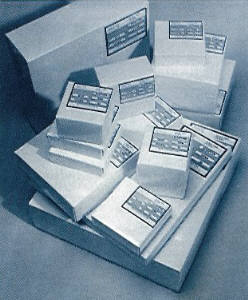
| Home : Filter Paper |
Filter Paper For Air Sampling and Other Uses |
|
Glass Fiber Filter Paper Grade FPXM is made from 100% high quality borosilicate glass micro fibers. It is designed to be used as a general purpose filtration media. Many glass fiber filter paper grades are used for air sampling. FPXM is an excellent all around analytical grade filtration media for use in removal of micron and submicron size particulates from both liquids and gases. This glass fiber filter possesses less than 5% acrylic binder and typically is of excellent purity. This purity makes FPXM very useful in reducing the number of possible variables which are frequently introduces into experimentation from trace levels of extractable organics inherent in cellulose filter paper. F&J carries many more grades of filter paper. Contact Us Please Email or Contact Us for your filter paper needs! |
|
Particle RetentionFor air or gas filtration FPXM has a DOP efficiency of 98% when measured at a flow velocity of 32 liters per minute, through a 100 square centimeter area, with a particle concentration of 100 micrograms per liter of air. DOP (dioctyl phthalate) particles used in such determinations have an average size of 0.3 microns. Liquid filtration particle retention values are highly dependent of numerous factors which affect a depth filter's ability to capture and hold particulates. These factors include the physical shape of the particles, viscosity of the solution, flow velocity and others. Although gauging particle retention values for liquid filtration are not as definitive as for air filtration, it is estimated that FPXM retains particles in the 1 to 2 micron range with very high efficiency. High Flow RateThe non-fibrillated structure of the glass microfibers used in FPXM allow very rapid flow rates to be achieved, without the loss of collection efficiency for small particles. Use of low vacuum makes it possible to achieve flow rates equal to or faster than cellulose filters having far lower retention efficiency in the one to two micron range for liquid filtration. The exceptionally high flow rates able to be achieved with glass fiber filters makes FPXM ideal for procedures which require low back pressure while collecting particles as small as a few tenths of a micron in air or gas filtration. High Loading Capacity
Load capacity is a measure of a filter's ability to collect particulate
without clogging or cessation of flow. The geometrical configuration of
the glass microfibers and their formation into paper form in FPXM
permits very high loading capacity. Collection of virtually of all
types of particulate can be increased by using FPXM in place of
conventional cellulose paper filters. Chemical and Physical Inertness
|
|
